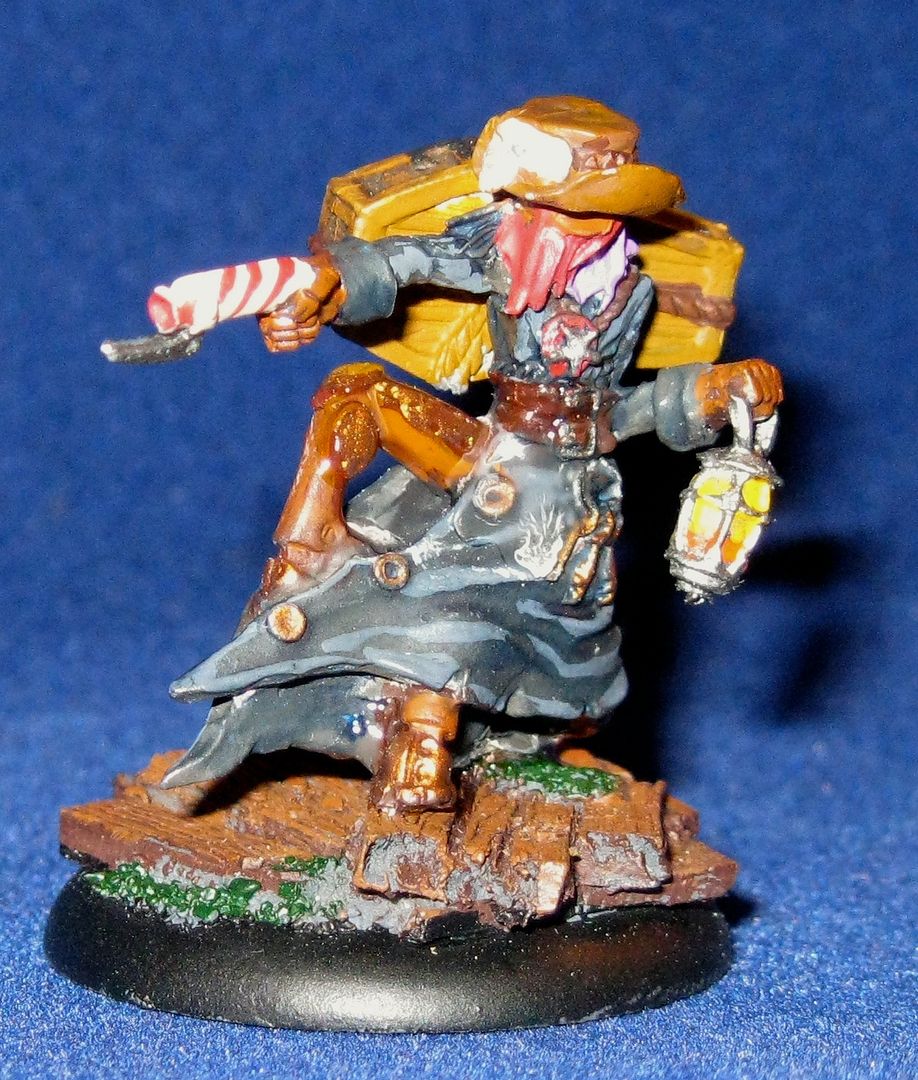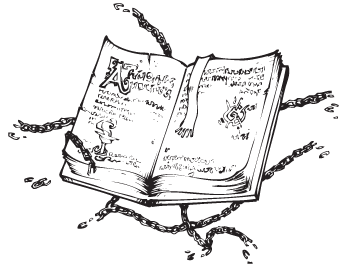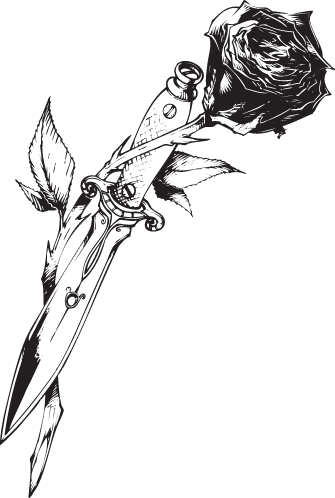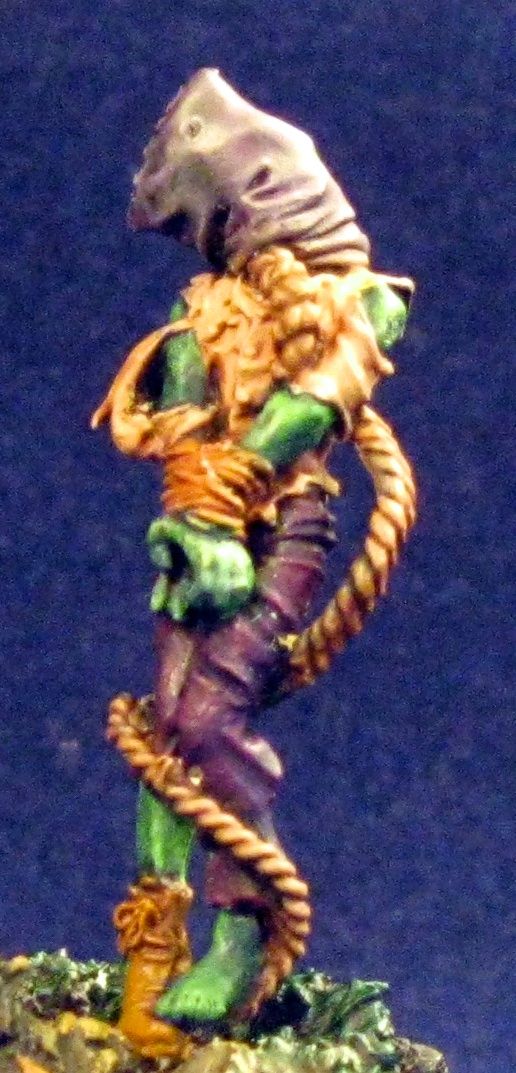So, how about a little background to why I wanted to write this article. First, I am a competitive Malifaux player. I enjoy the competitive tournaments and seem to do fairly well in them. I am also acting as a primary Tournament Organizer for a number of events, both large and small. This gives me a certain perspective in watching games (win and lose). Lastly, I have been following a large number of balance discussions in relation to Malifaux and have a theory I wanted to explore regarding those perceived balance issues.
This is a great place to note that the release of Book 4 - Storm of Shadows - may change the dynamics seen this year for faction to faction perceived balance. The timing issue still applies however.
So lets dive right in. Malifaux is a game where you choose your faction, then hire your crew from within that faction. It is a game where you have a primary objective and two secondary objectives, which you play toward over 6 turns. There are a number of ways to choose your primary objectives, typically by flipping on one of two tables to see what you have. Often those objectives are seperate for each player, but just as often they are shared with a single objective both players are striving to complete.
In a tournament, some of these factors tend to change. First, many tournaments dictate what the primary object (strategy) is that you will be striving to complete. Then, they make this a shared strategy as that helps tremendously on scoring. After this, tournaments have a fixed amount of time for each round, enforcing time limits on how long a game will go. These time-limits do not take into account the number of game rounds you have played, but are typically set at a fixed time limit such as 90 minutes.
The time limits and nature of tournaments provides an interesting twist to the game as a whole. Many people will plan out how they wish to achieve their strategies and schemes based on a 6 round game. They make allowances for if the game goes an extra turn, and plan their crews accordingly. Rarely do players plan to play thier games in 70 or 90 minutes. In a tournament, it is more likely that the 70-90 minute time frame will see games actually going 4 turns as opposed to 6. In addition, many games will not see a final "End Closing Phase" or even any part of a closing phase, as the end of the game will be called in the middle of a single model's activation.
This creates some very unique complications when planning out how you are going to approach the game. The largest piece of advice I gave to players over the weekend (when asked), was figure out how to win your game in 3 turns. You may play a whole game but chances are you will only see 3 or 4 turns in a major con-centered tournament. This is not always due to slow playing players, but is due to the nature of how Malifaux plays overall. I very rarely saw a player slow-playing or stalling the game over the Gencon Weekend, but I regularly saw games that did not finish. While I hope this is addressed in future official tournament formats, it is the nature of the current format that we have to take into account.
So, what does this mean? More importantly (for this article) does this affect the perception of balance across the faction. I strongly believe that it does. The current perception is that Neverborn is at the top of the heap when it comes to strongest faction. Lots of people will argue that it is not (I am one of those), and that all the factions are balanced well against each other. This is very true in a "normal" game that goes through all 6 rounds and resolves naturally. In the artificial environment that tournaments create, I shift my stance to Neverborn being very much at an advantage. Further, I believe that there are specific masters in other factions that have a similar advantage, while the rest don't. I will go one step further to say that at least 1 faction is simply weaker overall when it comes to the time restrictions in tournaments.
So, lets take a closer look at Neverborn first. Neverborn are understood to be "Glass Cannons" overall, and they have an advantage in speed and movement. When a game is not going to move through a complete 6 turn resolution, the "Glass" portion above becomes less important. Most Neverborn crews have the advatage of being able to follow the following recipee in a tournament game via different methods:
- Delay through turn 1 to see what the opponent will do
- Move to the center of the board/target spot on the board on turn 2 to grab the objective
- Dish out the necessary damage/movement/interactions/etc over turns 3 and 4 to grab strategy and scheme points
- Game tends to end before turns 5 and 6
Lets jump to the other side of the spectrum, which is a faction I also play. Guild has the ability to deal out a lot of damage, but rarely takes large model count crews and only has a limited number of fast moving models among its choices. Guild can work very well across a 6 turn game, but starts to run into trouble if they have to compress that time frame. Guild suffers from a very very limited selection of models that have high movement and retain AP for interact actions. This list is really limited to Guild Hounds (6 inch walk, on the trail (nimble), plus 2 AP), Wardens, Peacekeepers, Pale Rider, Santiago, and Perdita. In addition, Guild has a tough time gaining fast for their models.\ and has very little summoning. This means that the Guild tends to spend the first two turns getting into position. In a typical tournament game, this is half the game spent getting into position, leaving very little time to do anything else. In addition, this limits their ability to react to a fast moving opponent, as typical guild crews do not have the models to out-activate their opponent. It also creates a predictable first turn of movement for the Guild player that an opponent can factor into their plans and utilize to their advantage.
I believe that those two factions are at the ends of the spectrum for a condensed four turn tournament game. That brings us to both Arcanists and Resurrectionists. I play a limited amount of Arcanists currently, and do not play Resurrectionists at all. I can speak to these based primarily on what I saw during the tournaments at Gencon.
Resurectionists have a number of models and crew builds that are very strong across the full 6 turn game. They suffer when it comes to strategies and schemes that require a lot of movement, and especially a lot of early movement. Ressers are very resilient and are a late game strength faction. This weakens their capability in competing against other factions when the games are condensed. This means it takes a higher level of skill at the game and in playing to do well with all but one of thier masters than it does for other factions. The stand-out exception to this is Kirai. Kirai can bulk up her crew on the move, has very big movement tricks to gain speed in the game, can out-activate her opponent easily, and is very resilient. This makes Kirai very similar to Collodi in the game, being a very strong choice for tournaments. This provides some indication for why Kirai is considered a top master in the game.
Arcanists have a couple of very fast masters that can do well in tournaments, along with some very resilient masters. Colette is the master of movement tricks and quick movement, while Marcus can gain an incredible amount of movement during a turn as well. Colette is typically easier to keep alive than Marcus, and Marcus suffers from a complicated crew build. Ramos has historically been a slow master, but his Avatar provides some addition resilience, hitting power, and speed to his crew. One issue with non-Colette Arcanist crews is the requirement that Guild runs into, that being a need for turns 1 and 2 to be dedicated to positioning your crew for accomplishing your goals. Colette has an amazing movement ability, but has trouble hitting hard against very resilient crews.
Lastly we come to Outcasts. Outcasts are a mixed back and play very differently across the faction. All the outcasts have an ability to either gain fast on their models, gain tremendous movement, or control the game in some fashion. Outcasts can do well in the short game, but are complicated to learn how to use. I believe this is why on a global scale the outcast showing is mixed. Overall, outcasts did not do badly across the tournaments at Gencon.
So, before we close out lets look at how Schemes play into this a bit. The additional factor that must be taken into account for tournaments is how can you grab your schemes without having them taken away. Which schemes are reliable to achieve within the 4 round time-frame and also "keep" points on. Everyone has access to the basic set of schemes, but some factions have models better at a couple of those than others. A great example is either Pandora or Zoraida for Steal Relic. Both of those models have high WP. Both of those models can quickly get to the point where they engage the opponents master. Both of those models have abilities that keep them alive unless heavily focused on. This makes Steal Relic great for those masters, but not for most other masters in the game. Others such as Hold out are pretty good vs specific opposing factions, such as Guild and Resurrectionists. Then there are schemes such as Bodyguard and Breakthrough which are especially good for masters such as Colette and her crew. The factor that seperates the Factions within the game are the Master and Faction specific schemes. Lets look at those.
Guild has Raid and Round Up as their faction specific schemes. Both of these require you to engage your opponent and remove his or her models from the game. One requires you to have more minions than your opponent in play at the end of the game, the other requires you to kill all your opponents minions. Both of these are very hard to do in a 4 turn game. For master specific Schemes, we have four schemes requiring the master to kill 2 or 3 enemy models with specific abilities. These do not make for great schemes across 4 rounds of a game. Overall, Guild suffers with the schemes they can take, and with thier ability to achieve the general schemes faster than thier opponent while staying in 4 rounds.
Resurrectionists have Army of the Dead and Death after Death as their faction schemes. The first requires corpse counters to be littered across the table, which is tough considering the number of non-living models in the game. The second requires you to raise a number of models so you have more models in play at the end of the encounter than at the beginning. This second scheme is easier than the first, but till requires you to effectively ignore your strategy to achieve it. Thats not the best choice for winning a tournament round. Resurrecitonists have some models that do well at the general schemes, but not many. Kirai can do exceptionally well at breakthrough, bodyguard, and Eye for an Eye but the bulk of the faction suffers with the others. On the master specific side, we have 3 schemes that require attacking or killing the opposing master and 1 that requires placing corpse counters around the board. All of these are tough to do with only 4 rounds to deal with. Again, they rank at the bottom with Guild when it comes to accomplishing schemes.
Outcasts jump up next in my opinion, placing in the middle of the field on schemes that can be accomplished in a tournament setting. Outcasts have two faction schemes, Gather Soulstones and Thwart. Thwart is not great unless you are playing Neverborn, as most opponents announce their schemes. You end up losing out on a point immediately if your opponent announced both schemes. Then to gain the 2 points for the scheme, you have to stop both of your opponents schemes. Very tough to do in the tournament constraints. Gather Soulstones is the second but is also a bit tough. You need more SS in play at the end of the encounter than your opponent. This could be easier to accomplish with drain souls, but that requires sacrificing your crew. Only some specific Outcast builds do well with this method of gaining points. On master specific Schemes the Outcasts are a bit better off. Viktoria has to have the first two models to die in the game be the opponents. Not unreasonably hard. Leviticus must die four times during the encounter. As long as the turns go through turn 4, this is pretty straight forward. Somer and Hamelin have schemes that are more difficult, but overall the Master schemes are pretty straight forward. Add to that the ability to achieve some of the general schemes fairly well and you end up with a solid middle-of-the -pack standing for Outcasts.
Then come Arcanists. Arcanists have two schemes that are tough for 2 of their masters, and absurdly easy for the other 2. Sabotage and Power Ritual are very simple strategies to complete and complete early for both Marcus and Colette. Colette becomes the queen of completing these strategies, often able to grab the points by the end of turn 2 with little difficulty. On the Master Specific side, 3 schemes require killing opposing models with special model abilities, and one requires having more than 7 soulstones at the end of the game. Colette can actually accomplish this scheme fairly simply due to her ability to create SS through the game. Add in the strength of certain Arcanist crews to accomplish Bodyguard, Breakthrough, and Stake claim and you end up with 6 strong schemes for the Arcanists. This combination makes Arcanists really strong and possibly tied for first place on the scheme front.
Which brings us to Neverborn, who have very good schemes as well. The faction specific schemes are Kidnap and Reclaim Malifaux. Kidnap has the neverborn player identifying 3 of their opponents models and those models must be not in play at the end of the game. This is typically very very easy versus some factions. Second they have reclaim malifaux, requiring the neverborn player to use (1) ap to activate 9 quadrants. With their movement, neverborn have models that can very easily accomplish this. They then have 2 masters that are great at Steal Relic, 3 masters that are great at assassinate, 1 master that is nearly unparalleled at breakthrough, 4 masters that are fantastic at Bodyguard, 1 master that is really good at hold-out. Neverborn do really well with schemes overall. On the Master specific side this becomes a bit tougher, but the strength that neverborn bring to faction specific and general schemes makes the master specific schemes unnecessary. In addition, all these schemes are pretty easy for the Neverborn to accomplish within the 4 round constraint.
So, at the end of the day, I think thats where the perception of imbalance lies. I think these imbalances could be addressed by lengthening the proscribed time-limits on tournament rounds and by taking another look at faction and master specific schemes. Perhaps the Wyrd Approved Gaining Ground tournament format should look at using a new set of schemes that are balanced for all factions.
I will close out by saying I am surprised there are not more Arcanists at the top tables. I believe this is the case due simply to Neverborn being slightly better at General schemes within a 4 round time frame, and to the majority of Arcanist players being drawn to the faction for the challenge. I also believe that Book 1 is still heavily influencing the game, where the balance between factions was far different and more defined.
























